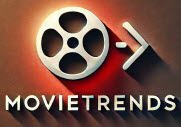A documentary film editor is like a scriptwriter
For any documentary editor, there's always the problem of plenty. There's usually a lot of footage at hand, running into hundreds of hours, and it takes some time to figure what to go with, and what to leave out. In the case of George Harrison: Living in the Material World, Marty (Martin Scorsese, director) and me had more than 600 hours of footage sourced from three different sources: one is from George's personal archives, another source was Apple Records — the record label formed by The Beatles — and the third source was our research team, scourging around the world looking for footage on George.
A lot of stuff you would never expect to find popped up in the process. A clipping of George performing 'Roll Over Bethoven', which is used in the film, is from a local TV show in Poland. My favourite footage is shot by the head of one of George's fan clubs years ago. She visited his house and shot his parents — the only footage we had of the two. We used a lot of still photographs of George's, most of them from his personal collection, like from his first trip to India.
After having edited the film, Marty and I came up with a version that lasted a little over four hours. But Marty wanted audiences to watch the entire film in one sitting, and hence we had to bring it down to three hours and thirty minutes. There was a lot of footage we shot that never made it to the final movie (but will be part of DVD extras) not based on whether they were close to George or not, but on how articulate they were. At the end of the day, they had to fit into the story Martin wanted to narrate about George. The film took three years of my life, but it felt like working on two movies — one about the life of the Beatles (part I of the documentary) and the other is Harrison's own life after the band broke up (part II).
What differentiates a documentary film editor from a feature film editor is that a documentary editor is also the film's script writer. In feature films, there's a designated screen writer. But in a documentary, or at least the ones I've worked on, there's no script. The director and editor have to structure the footage, and then script as they edit it. I'm not saying it's easier or more difficult than editing a feature, but editing a documentary gives you a different kick.






No comments:
Post a Comment